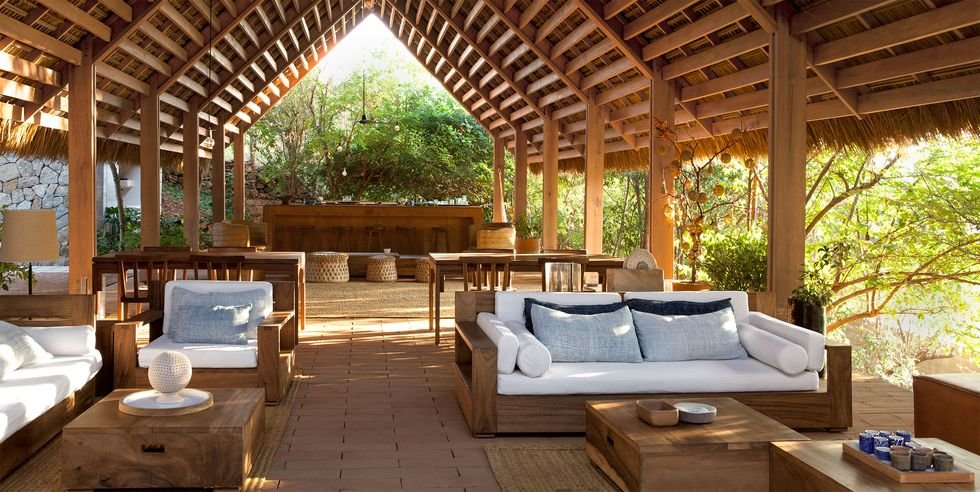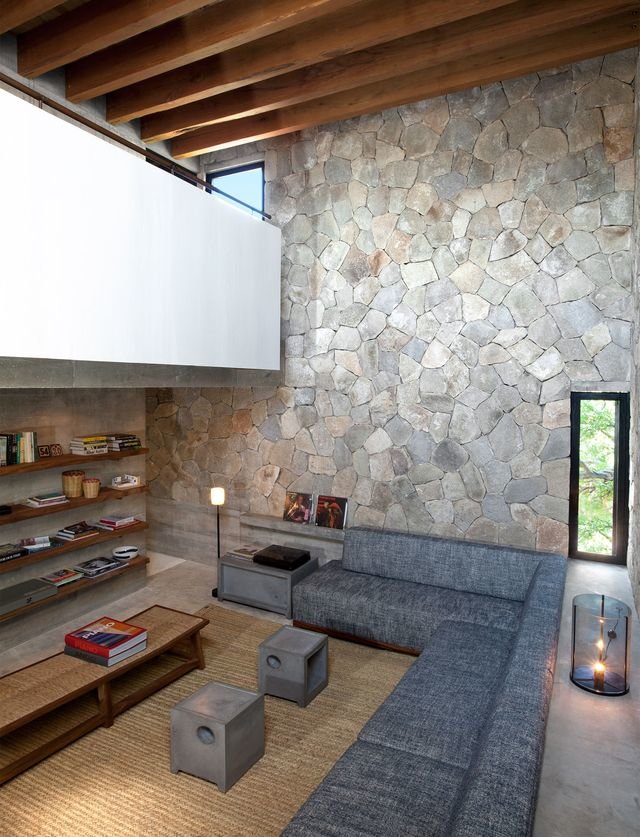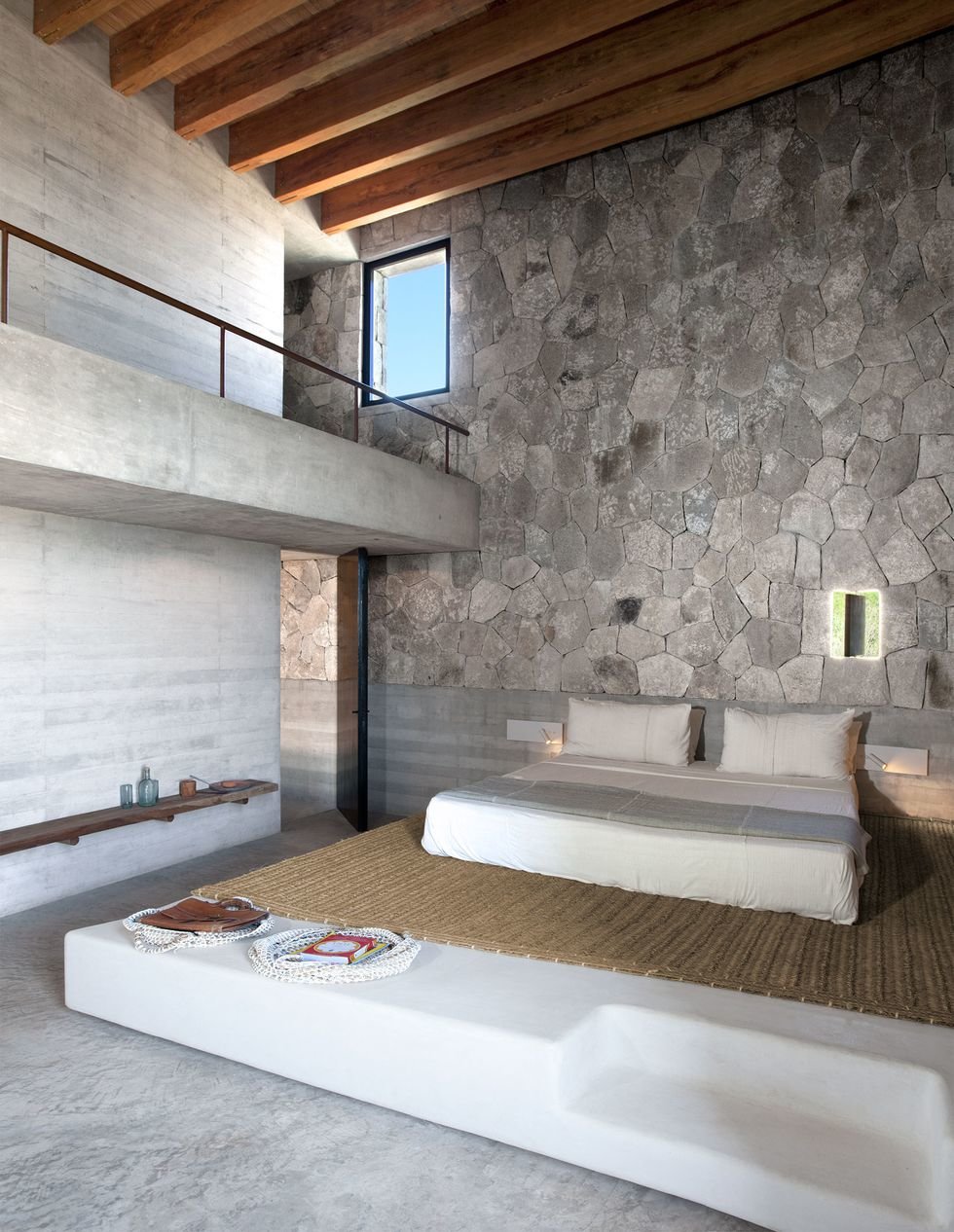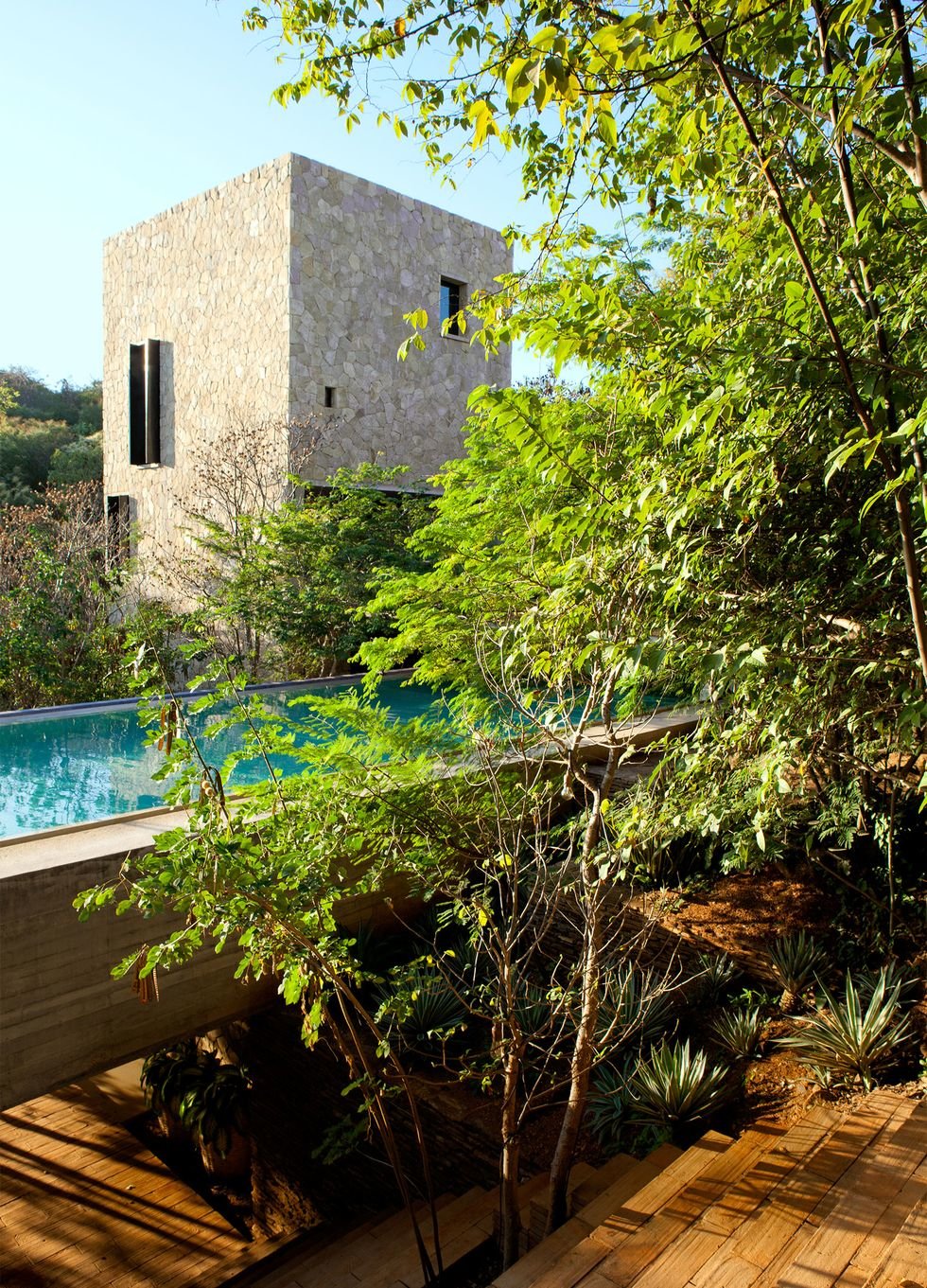On the Pacific Coast of Mexico, there is a rocky headland where you can watch the sun both rise and set over the ocean. The phenomenon gives a mystical aura to Punta Cometa, the bluff at the western edge of the beach town of Mazunte. Hotelier Carlos Couturier fell under the site’s spell during a trip there some 15 years ago. “I thought, This place is magic,” says Couturier, who bought land here next to a nature preserve. “It almost feels a bit spiritual.”
As a founding partner of Grupo Habita, a boutique-hotel firm in Mexico known for innovative design, he was constantly on the move. Six years ago, he was finally ready to plan his ocean-view retreat. “I wanted a place a bit like a monastery and where I could feel safe, so a bit like a fortress,” he says. “I also wanted it to feel pre-Hispanic.” 
Mazunte is in the state of Oaxaca, where the strata of Mexico’s ancient civilizations lie exposed against those of their Spanish colonizers and where Indigenous culture resonates strongly. Couturier looked for an architect who “understood Oaxaca.” He hired Mauricio Rocha, who with his partner at the time, Gabriela Carrillo, had turned an ancient Dominican monastery in the city of Oaxaca into a light-flooded cultural center.

The design of the house had to be integrated into the site’s steep topography and tropical vegetation. The solution was a series of platforms framed by two stone towers. The platforms evoke the ancient Zapotec city of Monte Albán. Rocha also looked at a more recent reference, Casa Malaparte, a modernist house on the island of Capri in Italy. “We wanted to create something that was timeless,” Rocha says. 
Couturier brought in the Parisian interior design firm LeCoadic-Scotto almost from the start. The project offered a chance to work in a “very minimalistic, very pure” way, says Yann Le Coadic.
To learn more about Oaxacan culture, Le Coadic and his partner, Alessandro Scotto, explored local villages with Couturier, drawing inspiration from the daily life of those communities. That trip persuaded Le Coadic that the house should have an open kitchen, like Mexican rural homes, so that guests can watch their food being prepared.
The kitchen is situated at the base of the upper tower below a reading room and opens onto the focal point of the house: a giant open-sided, thatch-roofed structure known as a palapa. The design is the distinct vernacular of Mexico’s Pacific Coast villages, casting shade and stirring a breeze in the heat. Below and parallel to it lies an 82-foot-long swimming pool. A terra-cotta deck links the upper tower to the middle of the lower tower, which houses the main bedroom and overlooks a spa and plunge pool. 
In an alcove at the base of the second tower, a cabinet by the French modernist architect Charlotte Perriand is on display-even before starting work on the project, Couturier told the designers that he wanted that precious piece on the property. Below the pool, in a suspended wooden structure, are three guest bedrooms; like every room in the house, they look out onto the Pacific.
Although Couturier built the house to enjoy Mazunte’s laid-back beach vibe, it is also a place where he retreats to be alone. “I wanted him to feel very peaceful in this huge space,” Le Coadic says. He divided the palapa into zones, creating intimacy around each activity with a plainspoken vocabulary. A terra-cotta counter centers one end. There is a section for dining, another with inviting, casual sofas, and at the other end, an outdoor stove and bar in volcanic rock, arranged to suggest what Le Coadic describes as “an antique sculpture of a god.” To furnish the palapa, the designers went no further than Mazunte’s beaches, where fishing families serve the catch of the day on wooden tables set out on the sand. Spotting a table and chair that could serve as a model, they began working with a local carpenter, ordering several prototypes before arriving at the final design.
Take a Tour of Carlos Couturier’s Mexican Retreat



To complete the house, Couturier took Scotto and Le Coadic on a journey in search of fabrics and ceramics. They traveled to the Zapotec town of San Sebastián Río Hondo, where a cooperative of artisans produces organic cotton using natural dyes and handlooms. On that trip, the hotelier and European designers slept on the floor of a village house, wrapped in woolen blankets against the highland cold-and ordered all the upholstery, sheets, and towels. In Los Reyes Metzontla, a desert town in the neighboring state of Puebla, they bought simple clay dishes for the kitchen.
After six years of construction, Couturier finally spent his first New Year’s Eve at his Mazunte home last December. Over that time, his partnership with the Parisians has grown. They are finishing the renovation of his house on the Spanish Balearic island of Minorca. They are also redoing a 12-room hotel for Grupo Habita in San Agustinillo, the village less than a mile down the road from Mazunte. For a hotelier who craves a monastic peace, it’s exactly the right distance.



![A Tranquil Jungle House That Incorporates Japanese Ethos [Video]](https://asean2.ainewslabs.com/images/22/08/b-2ennetkmmnn_t.jpg)









